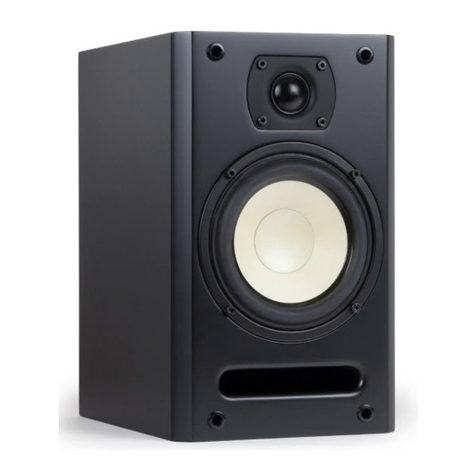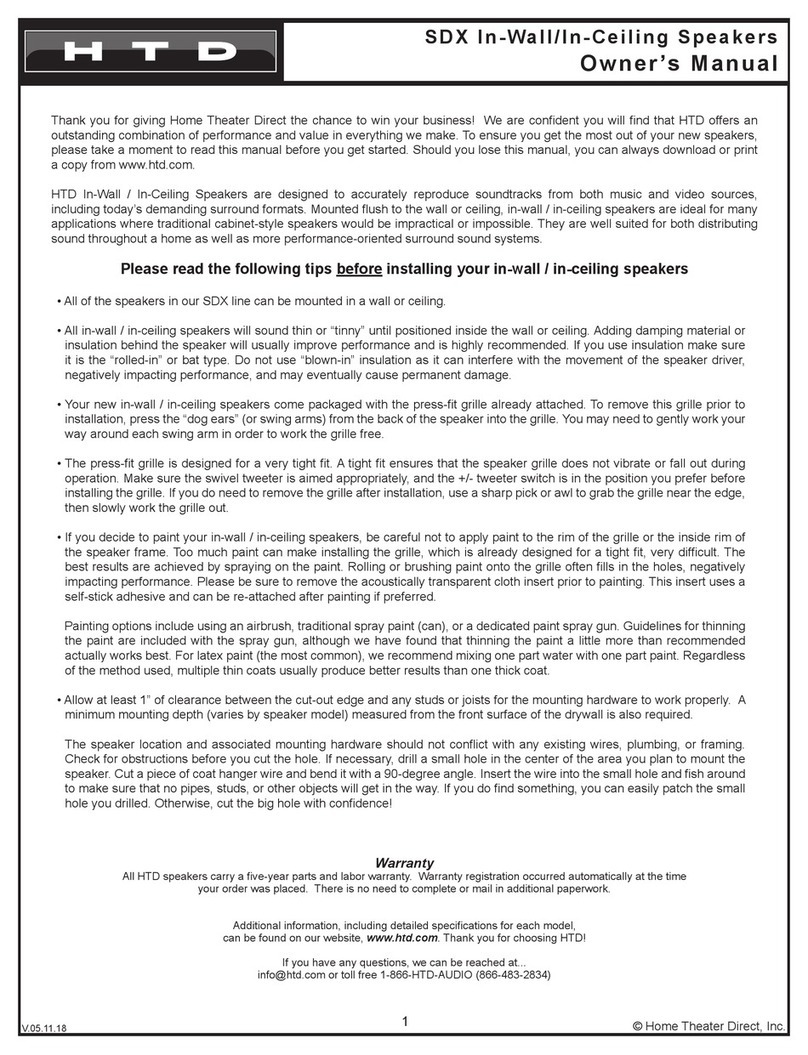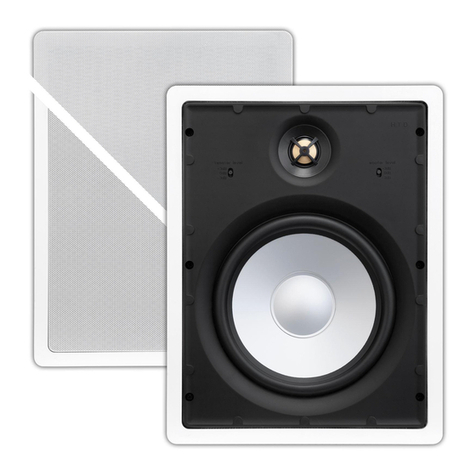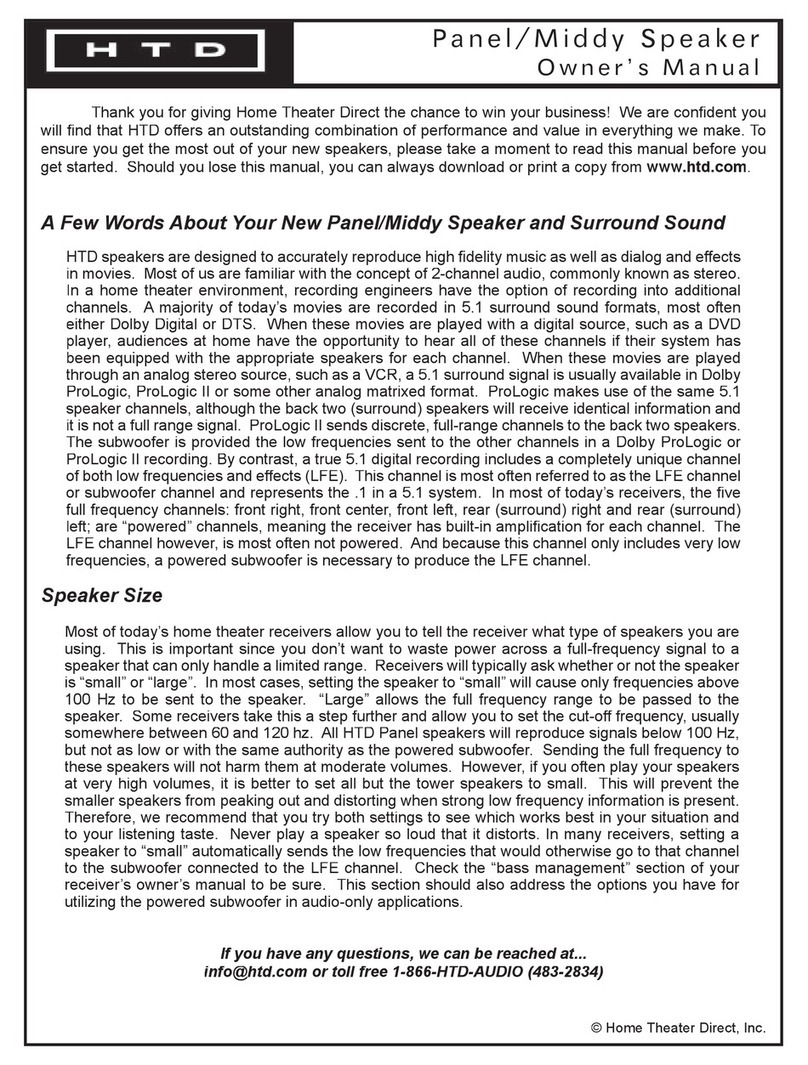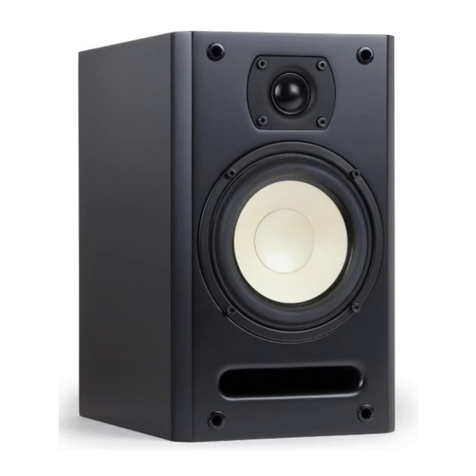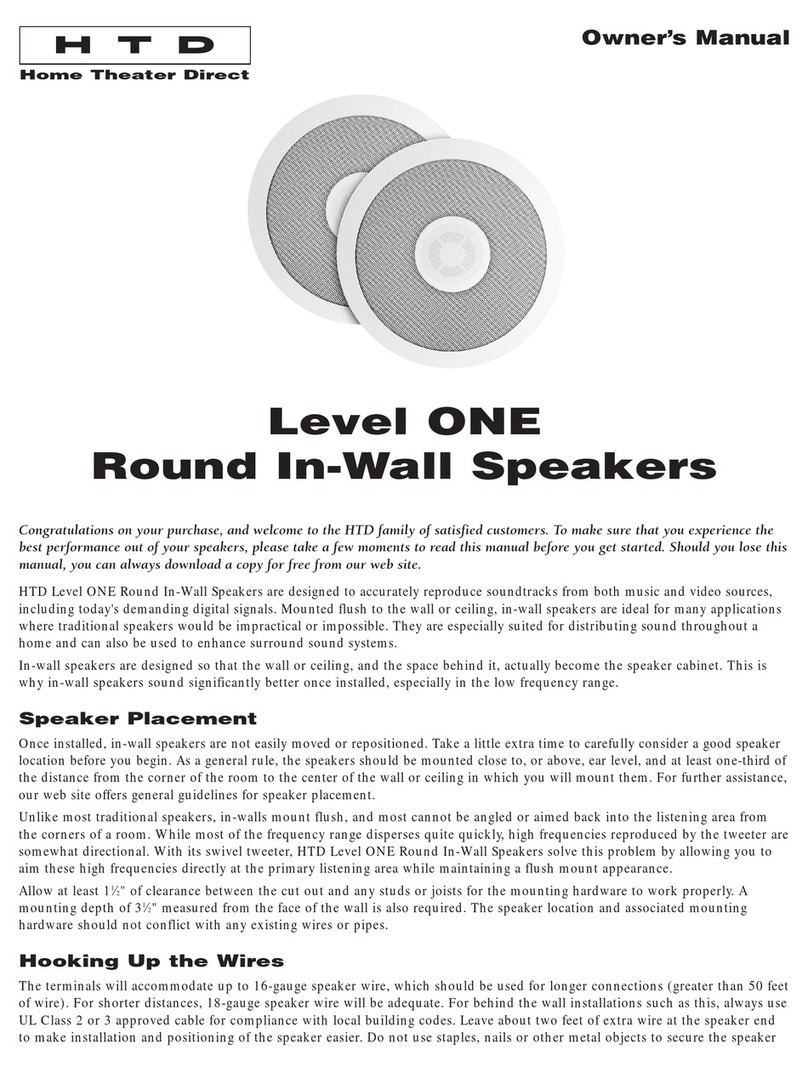
The amplier that is packaged with the subwoofer in this instruction manual complies with Part 15 of the FCC Rules. Operation
is subject to the following two conditions: (1) this device may not cause harmful interference, and (2) this device must accept any
interference received, including interference that may cause undesired operation.
Safety instructions for the Powered Subwoofer
Warning - To reduce the risk of re or shock, do not expose this appliance to rain or moisture.
Caution - To reduce the risk of re or shock, do not remove the cover or back. No user serviceable parts inside.
Refer servicing to qualied service personnel.
Caution - To prevent electric shock, match wide blade of plug to wide slot, fully insert.
Please read the following warnings and tips before hooking up your HTD Powered Subwoofer:
- Never connect speaker wire or line level connections with the Subwoofer power button in the ON position.
Always make your connections with the amplier OFF.
- Only use the power cord supplied with your HTD Powered Subwoofer.
- Never plug the HTD Powered Subwoofer into the back of another electrical component.
- We highly recommend plugging the HTD Powered Subwoofer into a power tree with surge protection.
CAUTION
RISK OF ELECTRIC SHOCK
DO NOT OPEN
The lightning ash with arrowhead symbol, within an equilateral triangle, is intended to alert the
user to the presence to un-insulated dangerous voltage within the product’s enclosure that may be of
sufcient magnitude to constitute a risk of electrical shock to persons.
The exclamation point within an equilateral triangle is intended to alert the user to the presence
of important operating and maintenance (servicing) instructions in the literature accompanying this
appliance.
Read Instructions
All the safety and operating instructions should be read before
the appliance is operated.
Retain Instructions
The safety and operating instructions should be adhered to.
Heed Warnings
All the warnings on the appliance and in the operating instruc-
tions should be adhered to.
Follow Instructions
All operating and use instructions should be followed.
Water and Moisture
The appliance should not be used near water. For example,
near a bathtub, washbowl, kitchen sink, laundry tub, in a wet
basement, or near a swimming pool, etc.
Ventilation
The appliance should be situated so that its location or position
does not interfere with its proper ventilation. For example, the
appliance should not be situated on a bed, sofa, rug, or similar
surface that may block the ventilation openings: or placed in
a built-in situation, such as a bookcase or cabinet that may
impede the ow of air through the ventilation openings.
Heat
The appliance should be situated away from heat sources
such as radiators, heat registers, stoves, or other appliances
(including ampliers) that produce heat.
Power Sources
The appliance should be connected to a power supply only of
the type described in the operating instructions or as marked
on the appliance.
Grounding or Polarization
Precautions should be taken so that the grounding or polariza-
tion means of an appliance is not defeated.
Power Cord Protection
Power supply cords should be routed so that they are not likely
to be walked on or pinched by items placed on or against them,
paying particular attention to cords at plugs, convenience re-
ceptacles, and the point where they exit from the appliance.
Cleaning
The speaker should be cleaned only as recommended by the
manufacturer.
Power Lines
An outdoor antenna should be located away from power lines.
Non-Use Periods
The power cord of the appliance should be unplugged from the
outlet when left unused for long periods of time.
Object and Liquid Entry
Care should be taken so that objects do not fall and liquids are
not spilled into the enclosure through openings.
Damage Requiring Service
The appliance should be serviced by qualied personnel when:
a) the power supply cord or the plug has been damaged: b)
objects have fallen, or liquid spilled into the appliance: c) the
appliance has been exposed to rain: d) the appliance does
not appear to operate normally or exhibits a marked change
in performance or e) the appliance has been dropped, or the
enclosure damaged.
Servicing
The user should not attempt to service the appliance beyond
that described in the operating instructions. All other servicing
should be referred to qualied service personnel.
Product Servicing
If your system fails to operate properly, please contact HTD
directly for further assistance, at 1-866-483-2834.
1
